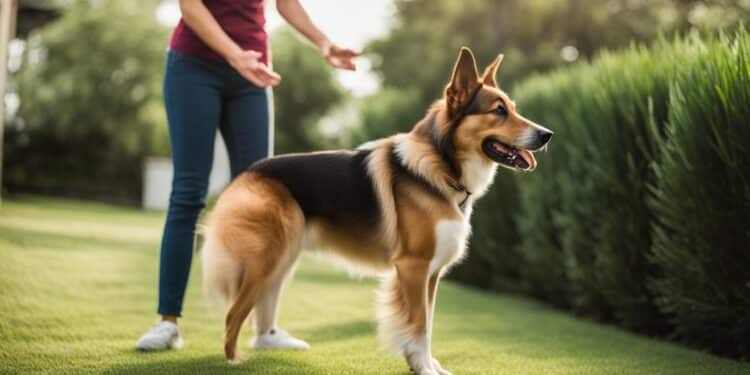Decoding Aggression: Understanding and Addressing Dog Aggression

Understanding dog aggression is crucial for responsible pet owners. Aggression in dogs can stem from various causes, including fear, territoriality, possessiveness, and social anxiety. It is important to recognize the signs of dog aggression, such as growling, bared teeth, lunging, and biting, in order to address the issue effectively. By understanding the different types of dog aggression, such as fear aggression, dominance aggression, and protective aggression, owners can tailor their approach to behavior modification and ensure the safety and well-being of both their dog and others.
In this article, we will explore the causes, signs, and handling of dog aggression, as well as the types of aggression that dogs may exhibit. By gaining a deeper understanding of these aspects, pet owners can equip themselves with the knowledge and tools necessary to address and manage dog aggression effectively.
Common Triggers for Dog Aggression
Dog aggression can be triggered by various factors. It is important for pet owners to identify these triggers in order to effectively manage and prevent aggressive behavior in their dogs. By understanding the common triggers for dog aggression, owners can take proactive measures to create a safe and harmonious environment for their pets.
Environmental Factors
Environmental factors play a significant role in triggering dog aggression. Loud noises, such as thunderstorms or fireworks, can cause anxiety and fear in dogs, leading to aggressive behavior. Changes in routine or unfamiliar surroundings can also be stress-inducing for dogs, resulting in defensive or territorial aggression.
Social Factors
Interactions with other dogs or humans can also trigger dog aggression. Dogs with limited socialization or negative experiences may exhibit fear aggression or react aggressively when faced with unfamiliar individuals or animals. Understanding and managing these social interactions is crucial in preventing aggressive behavior.
Medical Causes
It is important to consider underlying medical causes when addressing dog aggression. Pain, discomfort, or underlying health issues can contribute to a dog’s aggressive behavior. Hormonal imbalances or neurological conditions may also play a role. Consulting a veterinarian to rule out any medical causes is essential in managing dog aggression effectively.
By recognizing and addressing these common triggers, pet owners can take appropriate steps to prevent and manage dog aggression. Creating a calm and supportive environment, providing proper socialization, and seeking professional guidance when needed can help ensure the well-being of both dogs and their owners.
Behavior Modification Techniques for Dog Aggression
Addressing dog aggression requires the implementation of effective behavior modification techniques. By utilizing positive reinforcement, owners can reward desired behaviors and encourage calm and non-aggressive responses. This involves providing treats, praise, and affection when the dog displays appropriate behavior, reinforcing the idea that positive actions lead to positive outcomes.
Desensitization and counterconditioning are also essential in the behavior modification process. Desensitization involves gradually exposing the dog to the triggers that elicit aggressive behavior, in a controlled and safe environment. This allows the dog to become more familiar and comfortable with the stimuli over time, reducing their anxiety and reactivity. Counterconditioning, on the other hand, focuses on changing the dog’s emotional response to the trigger. By associating the trigger with positive experiences, such as treats or play, the dog learns to associate the previously threatening stimulus with positive emotions.
In some cases, seeking professional help from a dog trainer or behaviorist may be necessary. These professionals can assess the specific aggression displayed by the dog and develop a tailored behavior modification plan. They have the expertise and experience to identify underlying causes of aggression and recommend the most effective techniques for managing and modifying behavior. Professional training can provide owners with the guidance and support they need to address dog aggression in a safe and effective manner.
| Behavior Modification Techniques | Description |
|---|---|
| Positive Reinforcement | Rewarding desired behaviors to encourage non-aggressive responses |
| Desensitization | Gradually exposing the dog to aggression triggers to reduce reactivity |
| Counterconditioning | Associating aggression triggers with positive experiences to change emotional response |
| Professional Training | Seeking assistance from a dog trainer or behaviorist for tailored behavior modification plans |
Conclusion
Understanding and addressing dog aggression is crucial for responsible pet owners. By recognizing the signs, causes, and triggers of dog aggression, owners can take appropriate measures to address the behavior effectively. This not only ensures the safety and well-being of both dogs and their owners but also promotes a harmonious and happy environment.
Implementing behavior modification techniques is a key aspect of managing dog aggression. Positive reinforcement, such as rewarding calm and non-aggressive behaviors, can help shape desired responses. Desensitization and counterconditioning techniques can gradually expose dogs to triggers in a controlled setting, promoting positive associations and emotions.
In some cases, seeking professional help from a dog trainer or behaviorist may be necessary. These professionals can develop a tailored training plan to address the specific aggressiveness displayed by the dog. With patience, consistency, and a commitment to responsible pet ownership, dog aggression can be successfully managed, leading to a safer and happier environment for everyone involved.
Remember, responsible pet ownership encompasses understanding, addressing, and modifying dog aggression. By investing time, effort, and resources into behavior modification techniques, pet owners can create a positive and nurturing environment that fosters well-being and harmony.
FAQ
What are the signs of dog aggression?
Signs of dog aggression include growling, bared teeth, lunging, and biting.
What causes dog aggression?
Dog aggression can stem from various causes, including fear, territoriality, possessiveness, and social anxiety.
What are common triggers for dog aggression?
Common triggers for dog aggression can include environmental factors, such as loud noises or unfamiliar surroundings, social factors like interactions with other dogs or humans, and underlying medical causes like pain or hormonal imbalances.
How can I handle dog aggression?
Handling dog aggression involves implementing behavior modification techniques such as positive reinforcement, desensitization, and counterconditioning. Seeking professional help may also be necessary in some cases.
How can behavior modification techniques help with dog aggression?
Behavior modification techniques like positive reinforcement, desensitization, and counterconditioning can help manage and modify aggressive behaviors by reinforcing calm and non-aggressive responses and gradually exposing the dog to triggers in a controlled environment.






